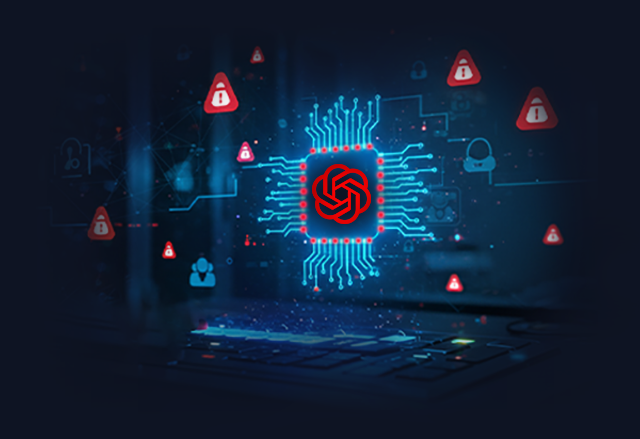So, your company rolled out ChatGPT. Maybe the idea was to save time, boost productivity, or just keep up with the AI hype. But instead of a game-changing assistant, you’ve got… something that kinda works, kinda doesn’t, and occasionally says things that make everyone question reality.
Sound familiar? You’re not alone. A lot of organizations dive into artificial intelligence without a clear game plan, and the results can be messy. The good news? Most of these mistakes are totally fixable.
Let’s break down the biggest ways companies mess up ChatGPT and how to make sure yours isn’t one of them
1- Trusting ChatGPT Like It’s a Know-It-All Genius
A lot of businesses assume ChatGPT response is always right; but here’s the truth: it can make things up, misinterpret data, and confidently deliver incorrect information. This isn’t just an inconvenience; it can be a serious liability in industries like compliance, finance, and legal services. Imagine a chatbot giving incorrect legal advice, miscalculating taxes, or suggesting the wrong medication dosage. That’s not just a bad look—it’s a risk no company can afford.
No need to worry! Advanced AI solutions now come with automatic evaluation and live monitoring to catch errors before they cause problems. These systems continuously analyze responses, checking for inconsistencies, inaccuracies, or misleading information. If something seems off, it gets flagged for review before being used. This ensures businesses receive accurate, verified, and trustworthy outputs rather than blindly relying on AI-generated responses.
Think of it like a fact-checker for AI. The system reviews responses for errors, missing details, or contradictions. If something doesn’t match expected answers, it gets flagged for review before anyone sees it. No more bad AI advice slipping through the cracks!
For example, A financial organization uses ChatGPT to generate investment reports. Without validation, the AI recommends a stock that doesn’t even exist. But with accuracy scoring and discrepancy detection, the mistake is caught, preventing misinformation from reaching clients—and saving the company from major embarrassment (or worse, financial disaster).
2- Falling for AI’s Wild Imagination
Sometimes, AI doesn’t just get things wrong—it completely makes things up. This is called an AI hallucination, where the system generates false facts, nonsensical answers, or even entirely fictional events. It happens when AI doesn’t have the right data but still tries to fill in the blanks. The worst part? It sounds completely confident, making it easy for organizations to trust and act on false information. This can lead to misleading reports, incorrect recommendations, or even legal and financial risks.
Now, AI can be trained to stop guessing and only rely on real, verified data. Instead of pulling answers from thin air, advanced solutions cross-check every response against reliable information before delivering an answer. If something looks suspicious, it gets flagged for review instead of being presented as fact.
This works by using a dual-index search, which verifies information in two ways:
- First check called semantic search: The AI looks at the big picture—does the response make sense in context? This is like understanding the general idea of a conversation.
- Second check called keyword index: The AI then double-checks specific words and facts to make sure they come from trusted sources—kind of like verifying a quote before using it in a report.
If these two don’t match, the system raises a red flag—dramatically reducing hallucinations and ensuring businesses only get responses based on real data.
For example, A legal firm asks AI for a summary of a court ruling. Without safeguards, the AI might fabricate a case that never existed—leading to serious legal risks. But with dual-index search ensuring fact-based responses, AI pulls only from legitimate legal sources and flags anything uncertain. This keeps businesses from acting on false information and helps maintain accuracy where it matters most.
3- Using AI Straight Out of the Box
Relying on default AI models is like using a one-size-fits-all suit—it might work, but it won’t fit perfectly. Industries like procurement, healthcare, finance, or legal services use highly specific terms, regulations, and work process, and a generic AI model won’t always understand them correctly. This can lead to confusing, inaccurate, or even completely irrelevant responses.
Instead of forcing a generic AI model to do everything, advanced solutions customize AI to fit your exact needs. They don’t just stick to one model but let you switch between different AI models based on the complexity of the task.
Here’s how it works:
- For complex, high-stakes tasks, the system let you choose a stronger model (like GPT-4) that understands deeper context and technical details.
- For simpler, everyday tasks, it uses a faster, cost-effective model (like GPT-3.5).
- Fine-tuning teaches AI the industry’s specific language, rules, and best practices, so responses are tailored, not generic.
For example, A legal firm asks AI to draft a contract clause. A default AI model might use vague, overly general language, making the contract unclear or legally weak. But with fine-tuned AI trained in legal terminology, the system ensures the contract is precise, accurate, and legally sound.
4- AI That Doesn’t Connect to Your Tools
Imagine hiring an assistant who never checks your emails, calendar, or customer database. They might be smart, but without access to the right information, they’re useless. That’s what happens when AI doesn’t integrate with your existing business tools.
If AI isn’t connected to your organization’s systems like CRM (Customer Relationship Management), ERP (Enterprise Resource Planning), or workflow automation tools, you end up with:
❌ Messy, disconnected data (because AI doesn’t know what’s already in your systems).
❌ Wasted time (because employees have to copy and paste info between tools).
❌ Missed opportunities (because AI can’t make informed decisions without the full picture).
The Good News: Advanced AI solutions now seamlessly connect with business systems instead of working in isolation. By syncing data and automating the process, AI becomes a powerful teammate instead of a disconnected chatbot.
Here’s how it works:
- Instant Data Access: AI pulls in accurate info from your CRM, HR system, or sales database, ensuring responses are accurate and relevant.
- Automated Process: Tasks like lead follow-ups, invoice processing, and employee onboarding happen automatically, without manual effort.
- Smooth System Communication: AI acts as a central hub, ensuring data flows smoothly between departments, so no one is left working with outdated information.
For example: A customer service team uses AI to handle inquiries, but without integration, it can’t access customer purchase history. That means every support request starts from zero. But with a fully integrated AI system, the assistant instantly pulls up past interactions, order details, and previous issues—providing fast, personalized support without extra back-and-forth.
By making AI connect with the tools your business already uses, you eliminate inefficiencies, speed up operations, and create a smarter, more seamless workflow
5- The “Too Much Information” Trap
Ever tried explaining something but went into way too much detail—only to see the other person’s eyes glaze over? General AI has the same struggle. When ChatGPT prompts are overloaded with unnecessary details, ChatGPT and other traditional AI assistants can lose focus, mix unrelated topics, or take longer to process information without delivering the best answer. It’s like asking, “Can you book me a flight?” and then pasting an entire travel blog into the request. Instead of giving you a simple response, AI now has to dig through paragraphs of extra information, increasing the chances of confusion or irrelevant results.
Now, advanced AI doesn’t just read everything like a giant block of text. It’s smarter! Instead of getting lost in a sea of details, it picks out the important parts and ignores the rest. No more sifting through unnecessary information—just quick, clear, and spot-on responses. Think of it like a highlighter for AI—it focuses on what matters and skips the fluff. This smart filtering process is called adaptive information retrieval.
For example, Imagine a business analyst asking AI for market trends but including reports, emails, and background details in the request. Without proper filtering, AI might get overwhelmed, providing an unfocused response or missing critical insights. With semantic chunking, the system extracts only the key insights, delivering a sharp, relevant summary without the extra fluff. The result? Faster, more precise answers that cut through the noise and give businesses exactly what they need.
5- AI that Doesn’t “Get It”
Sometimes, traditional AI assistants like ChatGPT and Gemini just don’t read between the lines. If a prompt is too vague or missing key details, they might misinterpret the request or respond with completely wrong answers. That’s because AI isn’t naturally great at filling in the blanks—it needs a little help to truly understand what users mean.
But here’s the fix: Advanced AI systems are now better at understanding what a user actually means, even when their request is unclear or missing details. Instead the common mistake of taking words at face value, the system figures out the main goal behind the request, picks out key pieces of information, and fills in any gaps using relevant context. This allows it to respond more accurately without needing the user to rephrase or provide extra details.
How It Works:
- Understanding Intent: The AI doesn’t just look at the words—it figures out the goal behind the request. Whether the user asks to “schedule a meeting” or “set up a call,” the system understands that both mean the same thing.
- Recognizing Important Details: The system identifies key details like names, dates, locations, or product references to fill in missing pieces of the request.
- Using Context: If essential details are missing, the AI searches for additional context—previous interactions, stored preferences, or external data—to generate a more relevant response.
- Smart Adjustments: Instead of asking the user to rephrase or clarify, the system automatically refines the request and provides a response that makes sense.
Think of it like a conversation with a mind-reader. If you say, “Book a flight,” without specifying the destination, the system scans for context clues—recent searches, preferences, past bookings—and figures out what you actually meant. No more frustrating back-and-forth, just smarter, context-aware AI responses.
6- Expecting a General AI to Be a Niche Expert
ChatGPT is great at casual conversations, but when it comes to highly specialized fields like law, compliance, or procurement, it doesn’t always speak the language. It might misinterpret key terms, overlook industry nuances. Imagine an AI managing procurement without understanding supplier compliance requirements or drafting contracts without considering regulatory policies. That’s not just inefficient—it’s risky.
Instead of expecting a general AI to have domain expertise, advanced systems are designed to adapt. They give you the freedom of switching between multiple AI models and use industry-specific data to ensure responses are accurate, relevant, and reliable.
- Smart Model Switching: The system provides different AI models based on the task—offering simpler options for quick responses and more advanced ones for complex, industry-specific needs, allowing you to choose the best fit.
- Industry-Trained AI: The AI isn’t just guessing; it learns from real-world data and user feedback to understand specialized terms, regulations, and best practices.
- Precision Searching: Instead of generating random responses, the AI retrieves verified, context-aware information before answering.
With this approach, businesses get AI that understands their industry, rather than one that just makes things up. Because when accuracy matters, guessing isn’t an option!
7- When ChatGPT Tries to Do It All
ChatGPT, Gemini, or other general AI-powered chatbots are great at answering questions, handling requests, and automating workflows. But here’s the issue—it doesn’t know when to step aside. Businesses that rely too heavily on AI risk creating frustrating, impersonal experiences, especially in customer service. Imagine calling a company about a billing mistake and getting stuck in an endless chatbot loop, repeating, “I didn’t understand that. Let me try again!” Or worse—getting a generic, pre-written response that doesn’t actually solve the problem. No one wants to feel like they’re talking to a machine when they need real help.
The key isn’t replacing humans with AI—it’s creating a smart partnership. Instead of making ChatGPT the sole problem-solver, businesses can use AI to handle routine tasks while ensuring human agents step in when empathy, judgment, or complex problem-solving is needed. This approach improves efficiency without sacrificing the personal touch customers expect.
The system is designed to balance automation with human expertise.
- AI handles the easy stuff: Simple questions like “What’s my account balance?” or “When will my order arrive?” are instantly answered by AI, saving time for both customers and support teams.
- AI knows when to pass the baton: If a customer asks something more complex—like disputing an incorrect charge or explaining a service issue—the system recognizes the need for human intervention and routes them to a live agent.
- Smooth transitions, not abrupt hand-offs: Instead of forcing the customer to start over, the AI provides the agent with relevant details, customer history, and suggested responses, making the transition seamless.
With this approach, businesses get the best of both worlds—fast, automated service for simple queries and real human support for situations that require a personal touch. Customers feel heard, supported, and valued, rather than stuck in chatbot purgatory.
8- Thinking of AI as a Cost Cutter, Not an Innovation Driver
Many companies see AI as just a way to save money, automating tasks to cut down on expenses. While that’s great, it barely scratches the surface of what AI can do. The real power of AI lies in driving innovation, uncovering new opportunities, and transforming the way businesses operate.
Instead of simply reducing costs, advanced AI solutions help companies work smarter. By handling time-consuming tasks like document validation and content analysis, the system frees up teams to focus on bigger, more strategic goals—whether that’s developing new products, improving customer experiences, or making data-driven decisions.
It’s not just about doing the same work for less—it’s about doing better, smarter work that wasn’t possible before.
AI success is about more than just plug-and-play! These mistakes aren’t inevitable. With the right approach—leveraging industry-specific models, ensuring seamless system integration, maintaining a balance between automation and human touch, and focusing on the culture of innovation rather than just cost-cutting—businesses can unlock AI’s full power. So, The question isn’t whether AI can work for your business, but how well you set it up for success.
Frequently Asked Questions (FAQs)
1. Can ChatGPT handle compliance and regulatory requirements?
Not reliably. ChatGPT lacks industry-specific compliance knowledge, making it risky for regulated fields. Advanced AI solutions, however, integrate with legal databases and validation systems to ensure compliance and accuracy.
2. Is AI effective for multilingual customer support?
Basic AI struggles with context and accuracy in different languages, leading to confusing translations. However, advanced AI ensures precise, culturally aware communication, reducing misunderstandings and improving the customer experience.
3. Can AI recognize when a request is unclear?
Basic AI often generates a random response instead of asking for clarification. Advanced AI detects ambiguity, prompts for missing details, and refines its answers for better accuracy.




